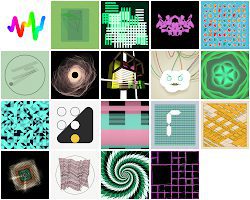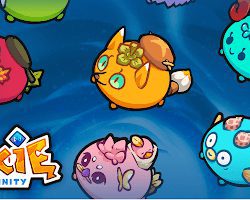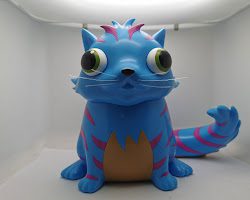Top 10 NFT Collectibles That Became Cultural Phenomena

NFT Collectibles, also known as Non-Fungible Token Collectibles, are a form of digital assets that represent ownership or proof of authenticity of a unique item or piece of content using blockchain technology. Unlike cryptocurrencies such as Bitcoin or Ethereum, which are fungible and can be exchanged on a one-to-one basis, NFTs are unique and cannot be exchanged on an equal basis with other tokens.
NFTs have gained significant popularity and traction in recent years, revolutionizing the way digital assets are bought, sold, and owned. They have opened up new opportunities for creators, artists, collectors, and enthusiasts to monetize and trade digital works in a secure and transparent manner.
At the core of NFT Collectibles is the concept of uniqueness and scarcity. Each NFT is distinct and can have its own set of properties, metadata, and characteristics. These digital assets can represent various forms of content, including artwork, music, videos, virtual real estate, virtual goods, in-game items, virtual pets, and more. The value of an NFT is derived from its scarcity, demand, provenance, and the market’s perception of its worth.
Blockchain technology, often utilized in conjunction with NFTs, ensures the security, immutability, and transparency of ownership records. Most NFTs are built on Ethereum’s blockchain using the ERC-721 or ERC-1155 token standards, although other blockchains like Binance Smart Chain and Flow have also emerged as popular alternatives.
The process of creating an NFT typically involves minting, which involves uploading the digital content onto an NFT marketplace or platform. The NFT is then assigned a unique identifier, recorded on the blockchain, and associated with the creator or owner. This process establishes provenance and verifies the authenticity of the digital asset.
Once minted, NFT Collectibles can be bought, sold, and traded on various NFT marketplaces. These marketplaces act as platforms where creators and collectors can interact, discover, and transact with NFTs. Some popular NFT marketplaces include OpenSea, Rarible, SuperRare, NBA Top Shot, and CryptoKitties.
One of the defining features of NFT Collectibles is the ability to attach smart contracts to the tokens. Smart contracts allow creators to earn royalties from secondary sales of their NFTs. Whenever an NFT is resold, a predetermined percentage of the sale price goes back to the original creator. This has transformed the way artists and content creators can monetize their work, ensuring ongoing revenue even after the initial sale.
NFT Collectibles have sparked significant debates and discussions surrounding digital ownership, copyright, environmental impact, and the speculative nature of the market. Critics argue that NFTs can contribute to increased carbon emissions due to the energy-intensive nature of blockchain transactions. Additionally, concerns have been raised about the potential for copyright infringement, as anyone can easily create and sell NFTs associated with existing digital content without permission.
Despite the controversies, NFT Collectibles have created new avenues for artists, musicians, gamers, and other creators to reach audiences and monetize their creations. The technology has also brought attention to the concept of digital scarcity and provenance, revolutionizing the way we perceive and interact with digital assets.
Importance of NFT Collectibles for the Economy
NFT Collectibles have brought about significant changes and opportunities for the economy, impacting various industries and sectors. Here are several key reasons why NFT Collectibles are important for the economy:
1. Empowering Creators: NFTs provide artists, musicians, and content creators with a new and direct way to monetize their work. They can sell their digital creations as unique, limited-edition items, eliminating the need for intermediaries such as galleries, publishers, or record labels. This empowers creators by allowing them to retain a larger portion of the value generated from their work, opening up new revenue streams and increasing their financial independence.
2. Enhanced Intellectual Property Rights: NFTs offer creators the ability to embed smart contracts into their digital assets. These smart contracts can enforce royalties, ensuring that creators receive a percentage of future sales. This strengthens intellectual property rights and enables artists to benefit from the appreciation of their work over time. It incentivizes the creation of high-quality content and encourages continued innovation.
3. Democratizing Access: NFT Collectibles have the potential to democratize access to the art world, breaking down barriers that historically limited participation to a privileged few. Artists from all backgrounds can showcase their work on digital platforms, gaining exposure and reaching a global audience. Similarly, collectors can access a diverse range of artworks, collectibles, and cultural artifacts that may have been previously out of reach due to geographical or financial constraints.
4. Economic Growth and Job Creation: The emergence of NFT marketplaces and associated services has created new economic opportunities and job roles. NFT platforms require developers, designers, marketers, curators, and legal experts to support the ecosystem. Moreover, the growth of the NFT market has the potential to drive economic growth as artists and creators reinvest their earnings into their work, hiring additional talent, purchasing equipment, and stimulating related industries.
5. Increased Liquidity: NFT Collectibles offer a liquid market for digital assets. Previously, digital creations lacked a standardized and efficient way to be bought, sold, or exchanged. NFTs facilitate secondary market transactions, allowing collectors to easily sell or trade their assets. This liquidity enhances the market value of digital creations and encourages investment, as individuals can buy NFTs with the expectation of future appreciation or resale.
6. Authenticity and Provenance: NFTs provide a secure and immutable record of ownership and provenance. The blockchain technology underlying NFTs ensures transparent and tamper-proof ownership records. This verification of authenticity has implications beyond art and collectibles, extending to luxury goods, real estate, and other sectors where establishing provenance is critical. NFTs enable trust and reduce the risk of counterfeit or fraudulent transactions, fostering confidence in the market.
7. Cultural Preservation: NFT Collectibles have the potential to preserve and promote cultural heritage. Artists and creators can tokenize and digitize cultural artifacts, traditional artwork, and historical pieces, ensuring their preservation in a digital format. This allows for broader access to cultural heritage and facilitates the exploration and celebration of diverse artistic traditions from around the world.
While the NFT market is still relatively young and evolving, its impact on the economy is already noticeable. NFT Collectibles have the potential to reshape industries, empower creators, drive innovation, and create new economic opportunities, ultimately contributing to economic growth and cultural enrichment.
Also read: NFTs and blockchain technology in the collectibles industry
Top 10 NFT Collectibles that Became Cultural Phenomena
Non-fungible tokens (NFTs) have become a cultural phenomenon in recent years, with some digital artworks selling for millions of dollars. While there are many different NFT collections available, some have stood out from the crowd and become cultural icons.
Here are the top 10 NFT collectibles that became cultural phenomena:
- CryptoPunks
CryptoPunks are a collection of 10,000 unique 2D pixel art characters that were created in 2017. They were the first NFTs to gain widespread attention, and they have since become one of the most valuable NFT collections in the world.

- Meebits
Meebits are a collection of 20,000 3D voxel characters that were created by the same team that created CryptoPunks. They are similar to CryptoPunks in many ways, but they have a more modern, 3D look.
- Art Blocks Curated
Art Blocks Curated is a collection of generative art NFTs that are created using a variety of algorithms. Each NFT is unique, and they are often highly abstract and visually striking.
- Bored Ape Yacht Club
The Bored Ape Yacht Club is a collection of 10,000 unique NFTs that feature bored-looking apes. They have become one of the most popular NFT collections in the world, and they have been worn by celebrities such as Paris Hilton and Jimmy Fallon.
- CryptoKitties
CryptoKitties were one of the first NFT collections to gain mainstream attention. They are a collection of digital cats that can be bred, traded, and collected. CryptoKitties were so popular that they caused the Ethereum network to crash in 2017.

- NBA Top Shot
NBA Top Shot is a platform that allows users to collect and trade digital moments from NBA games. These moments are NFTs, and they can be bought, sold, and traded on the NBA Top Shot marketplace.
- Axie Infinity
Axie Infinity is a blockchain-based game that allows players to collect, breed, and battle digital creatures called Axies. Axies are NFTs, and they can be bought, sold, and traded on the Axie Infinity marketplace.

- Hashmasks
Hashmasks are a collection of 16,384 unique NFTs that feature portraits of people with different facial expressions and accessories. They were created by a team of anonymous artists, and they have become one of the most popular NFT collections in the world.
- The Weeknd’s Blinding Lights
In 2021, The Weeknd released a limited-edition NFT of his song “Blinding Lights”. The NFT included a unique visualizer for the song, as well as a physical copy of the single on vinyl. The NFT sold for \$2.2 million, making it one of the most expensive NFTs ever sold.

- Beeple’s Everydays: The First 5000 Days
In 2021, Beeple sold an NFT of his digital artwork “Everydays: The First 5000 Days” for \$69.3 million. This made it the most expensive NFT ever sold at the time.
These are just a few of the many NFT collectibles that have become cultural phenomena. As the NFT market continues to grow, it will be interesting to see which other collections will gain widespread attention.
Also read: Top 10 NFTs Use Cases To Make Real World Experiences Richer
Benefits of using NFT Collectibles
Using NFT Collectibles offers several notable benefits across various domains. Let’s delve into the advantages of utilizing NFTs:
1. Authenticity and Ownership Verification: NFTs provide a robust solution for verifying the authenticity and ownership of digital assets. The blockchain technology used in NFTs ensures that each token is unique, cannot be duplicated, and is securely recorded on the distributed ledger. This feature is particularly valuable in combating fraud and counterfeit goods, as it establishes a transparent and tamper-proof record of ownership.
2. Monetization for Creators: NFT Collectibles have revolutionized the way creators monetize their work. Artists, musicians, writers, and other content creators can sell their digital creations directly to collectors, eliminating intermediaries and retaining a more significant portion of the revenue generated. The ability to attach smart contracts to NFTs enables artists to earn royalties on secondary sales, ensuring ongoing revenue streams from the appreciation of their work.
3. Increased Market Accessibility: NFTs have democratized access to markets that were previously limited by geographical or financial constraints. Digital platforms and marketplaces allow creators to showcase their work to a global audience, regardless of their physical location. Similarly, collectors and enthusiasts can discover and acquire unique pieces from artists around the world, broadening the market and encouraging diversity in artistic expression.
4. Fractional Ownership and Investment Opportunities: NFTs can enable fractional ownership, dividing a digital asset into smaller shares. This feature opens up investment opportunities for collectors who may not have the financial means to purchase an entire artwork or collectible. Fractional ownership allows individuals to invest in high-value assets and share the benefits of appreciation and potential revenue generated by the asset.
5. Interoperability and Interconnectivity: NFTs can be integrated into various digital ecosystems, promoting interoperability and interconnectivity. This means that assets represented as NFTs can be used across different platforms, games, virtual worlds, and applications. For example, a virtual sword or piece of land represented as an NFT in one game can be utilized or traded in another game or virtual environment, expanding the utility and value of the asset.
6. Preservation of Digital Artifacts: NFT Collectibles provide a means to preserve and authenticate digital artifacts, ensuring their longevity and historical significance. NFTs can be used to represent and tokenize cultural heritage, archival material, or historical artifacts, allowing for their preservation in a secure and verifiable format. This facilitates the digital preservation of important works and enables future generations to access and appreciate them.
7. Enhanced Fan Engagement and Rewards: NFTs offer opportunities for enhanced fan engagement and rewards for creators and brands. Through NFTs, artists, musicians, or sports teams can offer exclusive content, experiences, or merchandise to their loyal supporters. This strengthens the connection between creators and their fan base, fostering a sense of community and providing unique perks for dedicated followers.
8. Enhanced Transparency and Fairness: The blockchain technology underlying NFTs provides transparency and fairness in transactions. All transactions and ownership transfers are recorded on the blockchain, creating an immutable audit trail. This transparency helps prevent fraud and ensures that artists and creators receive their fair share of the value generated by their work, as the blockchain provides clear records of the history and provenance of each NFT.
9. Integration with DeFi and Gaming: NFT Collectibles can be integrated with decentralized finance (DeFi) applications and gaming ecosystems. DeFi protocols can enable lending, borrowing, or yield generation using NFTs as collateral. In gaming, NFTs represent unique in-game items or virtual assets that can be traded, used, or leveraged across various gaming platforms, fostering a vibrant and dynamic virtual economy.
NFT Collectibles offer a range of benefits, including increased authenticity, direct monetization for creators,
market accessibility, investment opportunities, preservation of digital artifacts, enhanced fan engagement, transparency, and integration possibilities. As the technology continues to evolve, these benefits are likely to expand, contributing to the growth and transformation of various industries.
Also read:Next Gen NFTs Are Not About Collectibles But NFT Utility
Future of NFT Collectibles
The future of NFT Collectibles holds immense potential as the technology continues to evolve and integrate into various sectors. Here are several key aspects that may shape the future of NFTs:
1. Mainstream Adoption: While NFTs have gained significant attention and popularity in recent years, they are still relatively new to mainstream audiences. As awareness and understanding of NFTs grow, more individuals, including artists, collectors, and enthusiasts, are likely to engage with NFT Collectibles. Increased adoption will drive innovation, attract new participants, and fuel the expansion of the NFT market.
2. Integration with Real-World Assets: NFTs are predominantly associated with digital art and virtual assets. However, the future of NFT Collectibles may see integration with real-world assets, such as real estate, luxury goods, or intellectual property rights. Tokenizing physical assets through NFTs can enhance liquidity, simplify fractional ownership, and facilitate global trading of traditionally illiquid assets.
3. Enhanced Utility and Interoperability: NFTs have already showcased their ability to integrate with various platforms, games, and applications. In the future, we can expect further developments in interoperability, enabling seamless transfer and use of NFTs across different ecosystems. This could lead to exciting opportunities, such as cross-game asset utilization, shared virtual economies, and interoperable digital experiences.
4. Augmented Reality and Virtual Reality Integration: As AR and VR technologies continue to advance, the integration of NFT Collectibles into immersive experiences becomes increasingly feasible. NFTs could be used to represent virtual assets, characters, or interactive objects within augmented or virtual reality environments. This integration could enhance user experiences, create new revenue streams, and blur the lines between physical and digital realms.
5. Enhanced Governance and Sustainability: The future of NFT Collectibles may witness the implementation of enhanced governance mechanisms. Communities and creators might establish decentralized autonomous organizations (DAOs) to collectively govern NFT platforms, determine standards, and drive decision-making processes. Additionally, efforts to address the environmental impact of blockchain technology, such as transitioning to more energy-efficient consensus mechanisms, are likely to become more prominent.
6. Tokenization of Intellectual Property: NFTs have already shown potential in revolutionizing intellectual property rights. In the future, we can expect further developments in tokenizing intellectual property, allowing creators to securely protect and monetize their ideas, inventions, and digital creations. NFTs could provide a more efficient and transparent mechanism for licensing, tracking usage, and enforcing copyrights.
7. Gamification and Virtual Economies: Gaming and virtual worlds have embraced NFTs, but the future holds even more possibilities. NFT Collectibles can fuel the growth of virtual economies, where players can earn, trade, and own digital assets across multiple games and platforms. Game developers may leverage NFTs to enhance player engagement, create unique in-game experiences, and foster player-driven economies with real-world value.
8. Enhanced Social and Charitable Impact: NFTs have the potential to facilitate social impact initiatives and charitable donations. Artists and creators can use NFTs to support causes they care about, with a percentage of proceeds going directly to charitable organizations. Additionally, NFTs can be leveraged to support emerging artists, empower underrepresented communities, or raise funds for social and environmental initiatives.
As the technology matures and adapts to emerging needs, the future of NFT Collectibles will likely be characterized by further innovation, increased integration, and broader societal impact. While specific developments may vary, the underlying principles of digital ownership, provenance, and decentralized ecosystems are likely to continue shaping the NFT landscape in exciting ways.
Unlock the world of NFT "Mars Colony Blueprint" where the top NFT expert has crafted an incredible collection that transforms NFTs into unparalleled masterpieces. #BlockchainRevolution #CryptoNews #cryptocurrency #NFTCommunity #NFTCollector #ETH #Blockchain #AI #Art #Collectibles pic.twitter.com/9ijnLHpdhw
— NFT BOKORASH | NeuraMarsCoin (N) (@NFTBOKORASH) July 16, 2023




























































